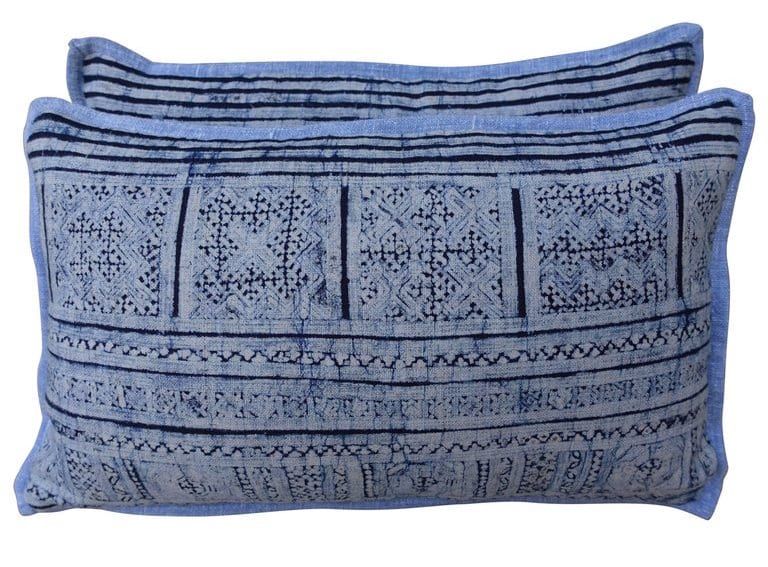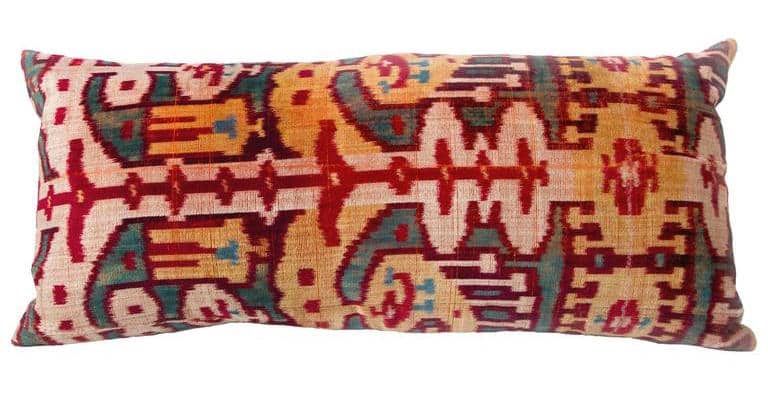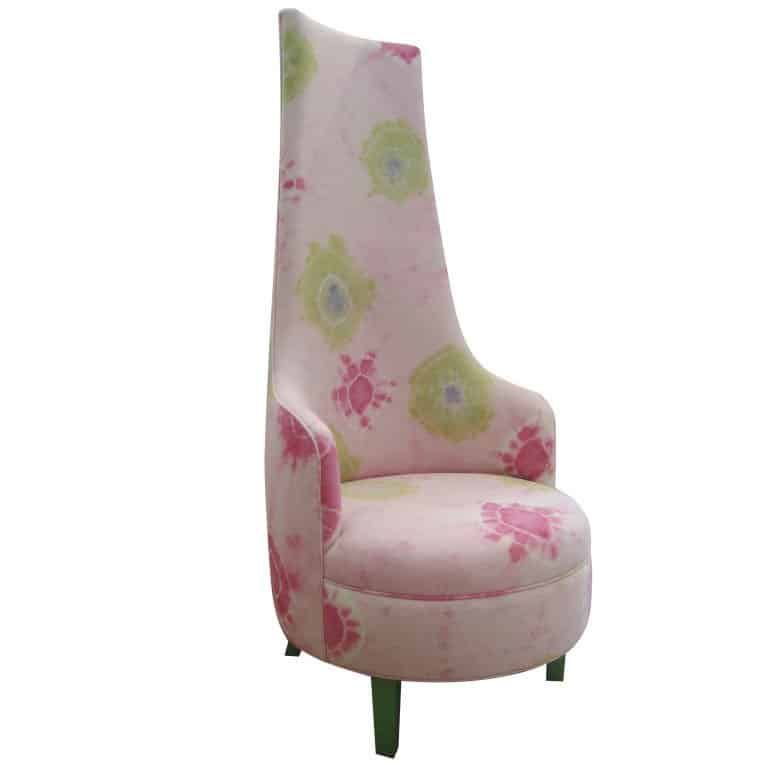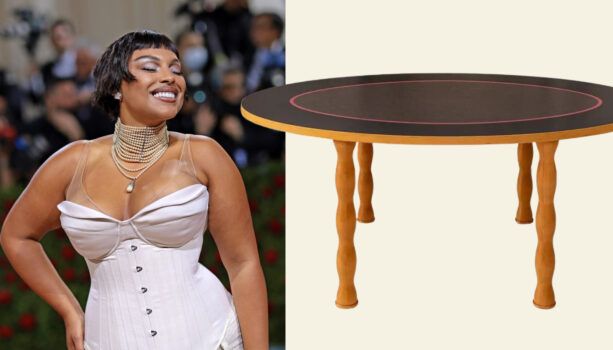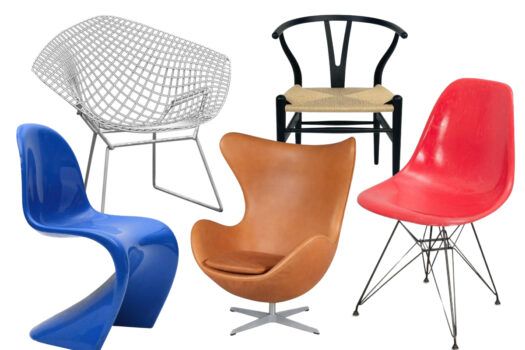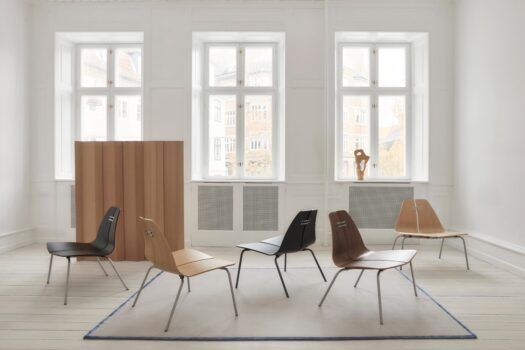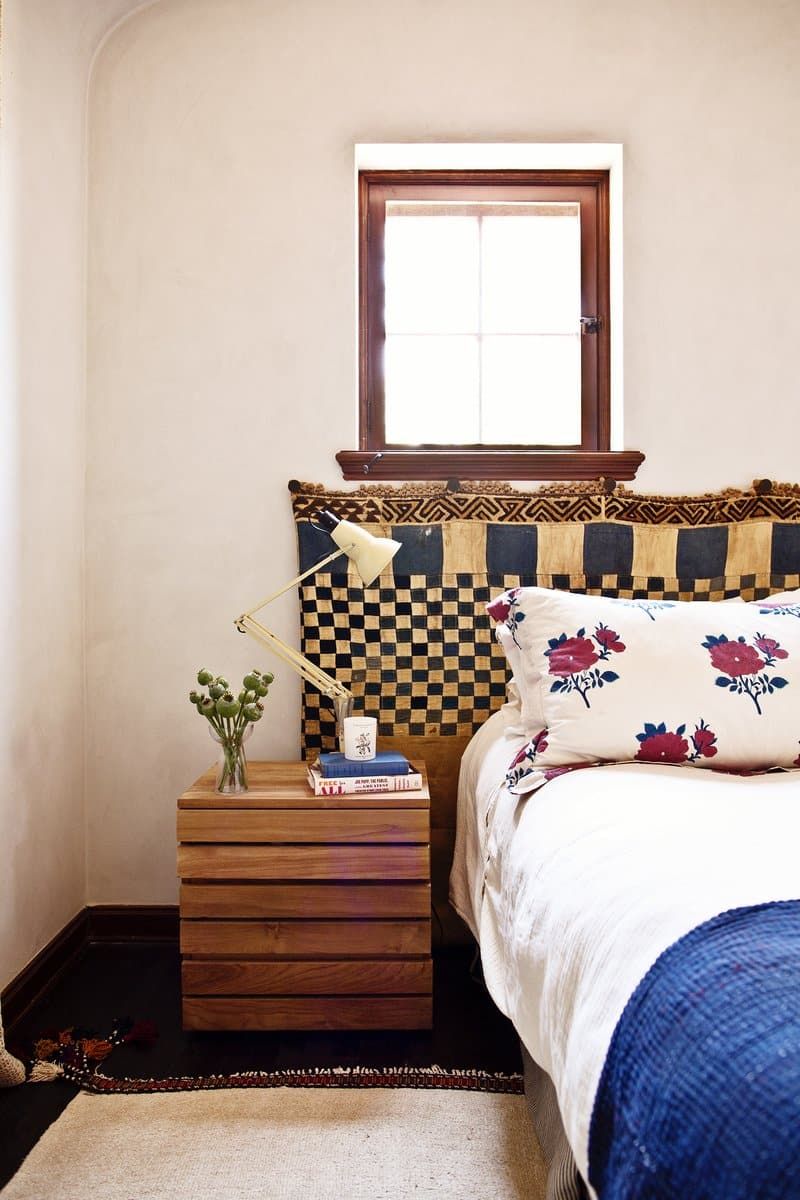
A mud-cloth-style textile serves as a headboard in a Los Angeles bedroom decorated by Reath Design. Photo by Kimberly Genevieve
The process of transforming a simple piece of cloth into a colorful, intricately patterned textile has been practiced since the dawn of civilization. The earliest evidence of hand-dyed fabrics is thought to be a pigmented fragment found in a cave in the Republic of Georgia, dating back to at least 34,000 B.C.
Since that time, almost every culture in every era has succeeded in producing a method of dyeing textiles, from religious coverings to blankets, to elevate many aspects of their daily lives. Here, we take a look at five hand-dyeing techniques with enduring appeal.
Batik
With roots in ancient Egypt, the batik dyeing tradition is practiced in Singapore, India, the Philippines and, perhaps most famously, Indonesia. Batik dyeing uses a wax-resist technique wherein an artisan pours a pattern of hot wax onto a piece of fabric and then dyes the cloth. Once the textile is dried, the wax is scraped off, revealing the undyed patterned portion of the fabric.
Traditionally, the wax is applied with a small instrument called a canting that has a copper reservoir and a wooden handle. It can take up to a year to dye a single piece of fabric with this process, so many creators now use a copper stamp for efficiency’s sake.
Ikat
Ikat differs from other hand-dyeing techniques in that the maker stains the individual fibers before weaving them together to create the finished textile. Artisans use string to tightly bind clusters of threads in the desired pattern and then dye the bundles, often multiple times with different colors, before weaving the threads together. It’s this highly individualized dyeing process that gives ikat textiles their hazy look.
Furniture designer and Five Finger Furnishings cofounder Maki Yamamoto is inspired by this sense of randomness in her own dyeing process, saying “because we can’t control how hand-dyed fabrics will look when they’re done, it’s always a great moment when you see the result. We should enjoy the art of unknown.”
Shibori
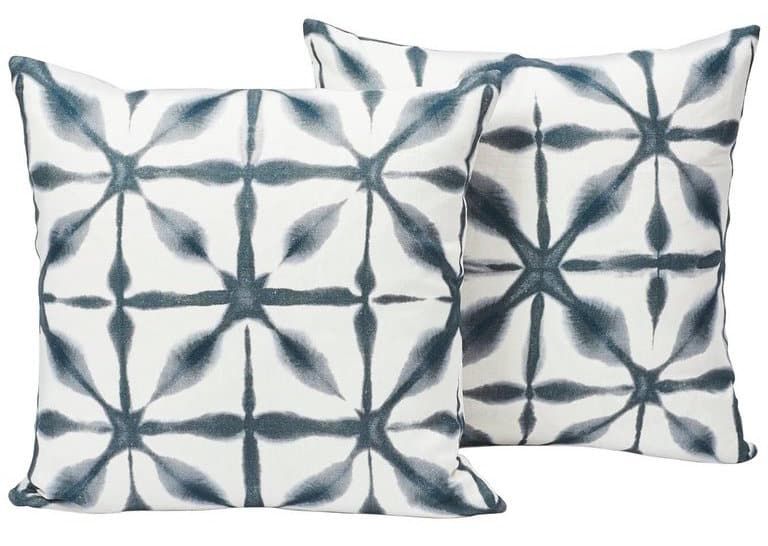
Schumacher’s Andromeda pillows have a shibori-style pattern on white linen.
In the Japanese dyeing tradition of shibori, an artist twists or folds a piece of white fabric, binds it, and then dyes it with indigo. The results are vibrant, boldly patterned textiles. Shibori is currently experiencing a design renaissance and is one of the most accessible hand-dyed textiles.
For those looking to add a hand-dyed piece to their decor, Melissa Dougherty of Five Finger Furnishings says, “Give it space to stand out. Don’t try to match it, just coordinate it for the look you want. Let it do for the room what a gem does for jewelry. Let it be a pop of beautiful color and life!”
Mud Cloth
Also known as bogolanfini, mud-cloth dyeing dates back to 12th-century Mali and is one of the most sought-after dyeing techniques today — as well as one of the most labor-intensive. Plain cloth is dyed in baths of tree parts to achieve a yellow wash. The cloth is laid out in the sun and a special fermented mud, or bogolanfini, is brushed onto the cloth in varying patterns. The process is repeated several times, until the sun bakes the brownish mud color into the fabric. The yellow parts are then bleached, leaving the darker sections to pop against a neutral background.
Tie Dye
While we may fondly dismiss this popular technique as a kitschy remnant of 1960s flower children and 1980s Grateful Dead fans, a tie-dyed piece can be an elegant addition to any home. Designer Kathryn Ireland says she loves “the imperfections of tie dying and the unique patterns that tie dye creates. You never get the same thing twice.” Tie dye shares technical similarities with shibori in that binding actions create the patterns.
Modern Applications
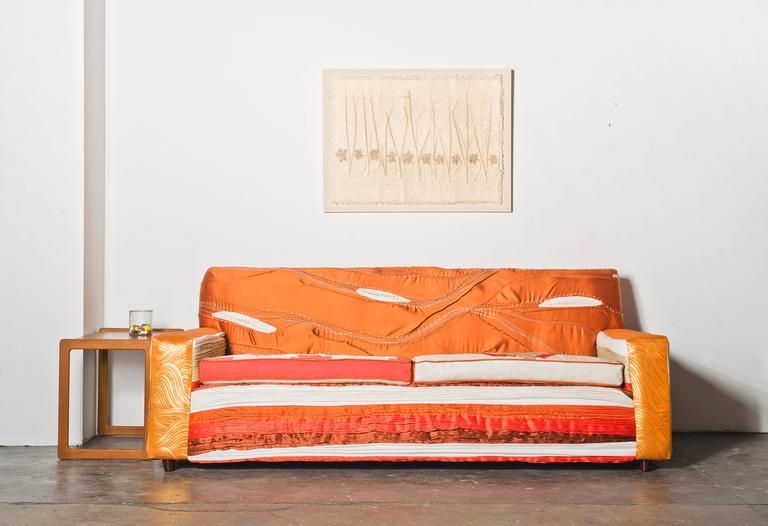
Maki Yamamoto and Melissa Dougherty created the Saidai sofa by manipulating a variety of new and vintage fabrics on a 1960s frame.
The team at Five Finger Furnishings often use vintage hand-dyed fabrics to transform traditional furniture into extraordinary pieces. Yamamoto explains: “We wanted to mix different elements to make this sofa a piece of maximalist art. We used hand-pleated silk, a vintage obi and kimono — which I brought in from Tokyo for this purpose — and on the back of the couch, hand-ruffled flowers in silk organza in the back of couch. Together, these textiles create interesting harmony with rich texture and graduation colors, which can be appreciated as an art piece.”
Dougherty concurs: “The only way this piece is possible is because we use traditional European upholstery techniques — think, hammer and tacks and hand-sewing. So things end up exactly where you want them. Working with this many different fabrics, textures and techniques is not for the faint of heart!”

An ikat-clad chair sits in a Malibu bathroom designed by Martyn Lawrence Bullard. Photo by Roger Davies
